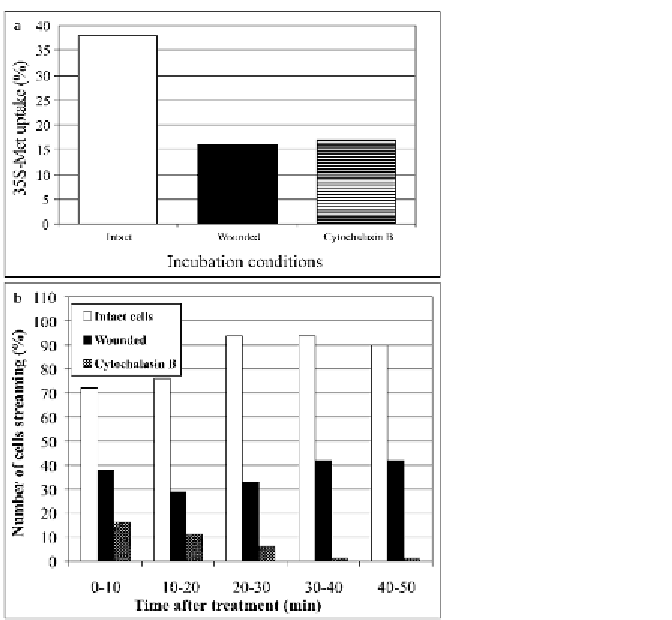Agriculture Reference
In-Depth Information
Fig. 21.3.
Protein synthesis and cytoplasmic streaming in
Elodea
.
a
Leaves of the aquatic
plant
Elodea
were either submerged intact in artificial pond water (
APW
), 2-cm pieces
excised (wounded), or submerged intact into APW containing cytochalasin B and incubated
for 1 h with labeled methionine to assay protein synthesis. Wounding and cytochalasin B
caused similar inhibition (approximately 50%) of protein synthesis.
b
Similar samples were
incubated in the absence of methionine and viewed continuously under the microscope at 10-
min intervals to evaluate cytoplasmic streaming (Pfeifer and Davies, unpublished results).
Note that wounding caused a consistent 45-50% inhibition of cytoplasmic streaming over
the 50-min time period, whereas cytochalasin B caused an increasing (85-98%) inhibition
over time, but removal of cytochalasin B relieved the inhibition (data not shown)
protein synthesis in animals by preventing ribosome movement along the
mRNA (Ryazanov et al. 1988; Shestakova et al. 1991). But this still did not
adequately explain the similar kinetics of inhibition and recovery of both
processes. They were so tightly linked that they might be associated with
the same structure - and if so, that structure was most likely the cytoskele-
ton. Already in the animal literature there was evidence for “detergent-
resistant” polysomes that remained with the cell after all membranes had
been removed, and so we set out to determine if such “cytoskeleton-bound

Search WWH ::

Custom Search